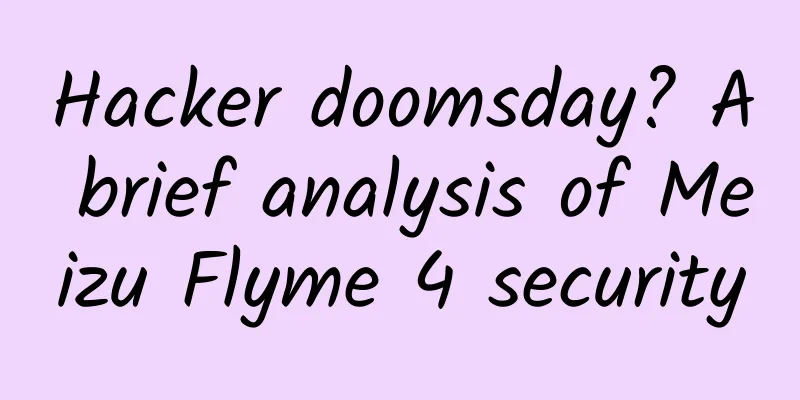Sanxingdui, how many mysterious stories are there?

|
This article is provided by Sichuan Provincial Institute of Cultural Relics and Archaeology Sanxingdui Museum, Peking University Media Integration Center Produced in partnership with Planet Research In this world Do gods really exist? Different people may have different answers. But for the Sanxingdui people more than 3,000 years ago The answer seems to be yes Sanxingdui Its creation So "deviant" Possessing a fantasy color that does not belong to this world (Against the backdrop of the museum, the bronze altar looks even more mysterious. Photographer: @余嘉) ▼ Its people Use your hard work and wisdom Build a magnificent country (Please watch in horizontal mode. The ancient city of Sanxingdui covers an area of about 3.6 square kilometers. It was the largest city site in the Sichuan Basin during the pre-Qin period. Map by @冯艺卓&赵榜/星球研究院) ▼ Its people We will also devote countless resources and energy Poured into a fantasy world (Please watch in horizontal mode. The discovery of Sanxingdui bronze artifacts allows the world to glimpse the unique spiritual world of the ancient Shu people. Photographers: @张艳&Visual China&包浩琳&吴渝&谭本建&唐宇星&冯艺卓&屈兵超&苏李欢&枫叶梧桐, map by @冯艺卓/星球研究院) ▼ For the Sanxingdui people God, it seems, is everything To this end, they tried to exhaust all To awaken "another universe" That Universe What does it look like? What is the reason? What led to its collapse and destruction? 01 Crisis and hope More than 5,000 years ago The flowers of civilization are blooming all over China Chengdu Plain blocked by high mountains But it is still a mystery (At this time, the Chengdu Plain was full of ponds and swamps, and no one had yet set foot in it. Map by @陈志浩/Planetary Research Institute) ▼ Maybe it's due to the climate. People living on the western Sichuan Plateau Hundreds of years of migration began They finally arrived at the Chengdu Plain Came to this "paradise" (Please watch in horizontal mode. The climate is dry and cold at this time, and drought is common in various places. The Chengdu Plain, which has abundant water resources, has become an ideal place to live. Image source: @Visual China) ▼ Perhaps, they haven't realized yet. In the near future On this plain What kind of brilliant civilization will they create? (The Chengdu Plain gave birth to the splendid ancient Shu culture, map by @Chen Zhihao/Planet Research Institute) ▼ Yazi River, a tributary of Tuojiang River To its south is a crescent-shaped terrace. Further south there are three small mounds. Local name "Sanxingdui" About 3,800 years ago, A new city was born (Sanxingdui Ancient City has clear functional zoning, map by @王申雯/Planetary Research Institute) ▼ The northern part of the city is the palace area There is a large artificial terrace here. A magnificent palace stands on it (Please watch in horizontal mode. The Qingguanshan Palace covers an area of about 1,000 square meters. It is one of the largest single buildings in the Shang Dynasty in China. Some people also believe that it is a temple dedicated to storing sacrificial supplies. Map by @冯艺卓/星球研究院) ▼ The southwest of the city is the sacrificial area People hold sacrificial ceremonies here Precious ritual objects used in sacrifices Buried here one by one (Bronze artifacts in the Sanxingdui burial pit, photographer @余嘉) ▼ Ordinary residents Live in other parts of the city Use "wood frame mud wall" Build your own house (The frame of the house is made of logs, embedded in the walls made of bamboo strips, and finally the walls are covered with mud and the roof is covered with straw. Image by @冯艺卓/星球研究院) ▼ They raise silkworms and reel silk here. Weaving clothes with intricate patterns (Sichuan is one of the important origins of Chinese silk. The silk production level during the Sanxingdui culture period was already quite mature. Photographers @吴渝&谭本建&冯艺卓, map @王申雯/星球研究院) ▼ They grow rice here. The remaining grain was used to make wine. After busy work, people Eating hot pot and drinking wine Life is simple and happy (The three-legged cooker can be used to make fire, and the wide open plate can be used to steam and cook food, which is a bit similar to the current hot pot. Photographers @张艳&谭本建, map @冯艺卓/星球研究院) ▼ But under the seemingly peaceful life There are still hidden crises and insecurity Abundant water sources It has irrigated the fertile land of Chengdu Plain. The Sanxingdui people who lived by the river A time bomb has been planted Shadow of the Flood Always surrounding them (The ancient city of Sanxingdui was built by the river. The picture shows the Sanxingdui Museum, for illustration only. Photographer: @陈良华) ▼ The crisis of nature has not yet been resolved As a country Sanxingdui must always be vigilant Surrounding enemies (According to the oracle inscriptions of Yinxu, a series of wars and peace events took place between Shang and Shu. Map by @陈志浩/Planet Research Institute) ▼ Facing various threats The still ignorant Sanxingdui people Putting hope in the world of God Maybe the power of the gods will help them Maintain your home To awaken this power They decided to open Another Universe 02 Another Universe In this universe What kind of gods would live there? Sanxingdui people believe Their ancestors must have been one of them. (From "Huayang Guozhi Shuzhi") ▼ "There was a Shu Marquis Cancong, whose eyes were vertical, and he was the first to be called king." Cancong, the legendary founder of the ancient Shu Kingdom It was he who led his people to Sichuan. He also taught people how to raise silkworms and reel silk. The Sanxingdui people worshipped him as a god His prominent eyes Nature also became a characteristic of the gods (The protruding eyes of the mask may be a reflection of the image of Cancong's "mu zong", representing the ancestor worship of the Sanxingdui people. Photographer @唐宇星, map @冯艺卓/星球研究院) ▼ The mysterious nature of things They also have their own divinity The ancient Shu land was surrounded by mountains and rivers The steep mountains tower into the clouds In the imagination of Sanxingdui people Here live the gods This is the way to heaven (Some scholars speculate that the mountain that the Sanxingdui people worshipped was Minshan. Photographer: @张艳, map by @冯艺卓/Planetary Research Institute) ▼ Maybe it's because of the wet and rainy weather. The power of the sun Worshiped by the Sanxingdui people (Sanxingdui sun-shaped object, photographer @Tang Yuxing, map @Feng Yizhuo/Planetary Research Institute) ▼ They created the bronze sacred tree Ten mythical birds perched on branches Represents the ten suns in the sky They take turns on duty Shining on the ancient land of Shu (Please appreciate the beauty of the details of the bronze sacred tree, photographer @包浩霖) ▼ The Sanxingdui people seemed to have a special affection for birds. Maybe in their imagination God has the appearance of a bird (This kind of human-headed bird-bodied image is found on the top of the small bronze sacred tree and altar in Sanxingdui, and may symbolize the "Central God" or the sun god. Photographer @柳叶氘, map @冯艺卓/Planetary Research Institute) ▼ This universe is so magical and colorful So, how can we make it Show it to the world? Another Universe Where God Lives It must be made of the most expensive materials Precious bronze In the hands of craftsmen in the bronze casting workshop Cast into the image of a god (Some objects with complex shapes are first cast into individual parts and then connected together. Image by @冯艺卓/Planetary Research Institute) ▼ Rare gold Forged into a "Mask" of God This is the most noble face of God. (The golden mask unearthed from Sanxingdui Pit 5 is the largest golden mask found in China during the Shang and Zhou dynasties. Photographer: Zhang Lei, map by Feng Yizhuo/Planet Research Institute) ▼ Pure jade Polished into a ritual vessel for communicating with God Only the purest power can "move" the gods (Zhang is one of the important ritual vessels in ancient times. Photographer: Zhang Yan, map: Feng Yizhuo/Planet Research Institute) ▼ Another Universe Where God Lives There should also be a scale that is scary. Big, big, big It must be big enough Only in this way can there be enough deterrence Proclaim the power of God to the world (Some of the bronze artifacts in Sanxingdui are very large, showing the fanatical religious beliefs of the Sanxingdui people. Photographers @苏李欢&谭本建, map @王申雯/Planetary Research Institute) ▼ However, not everyone is eligible Talk to the universe Another Universe Where God Lives Only the most noble people can communicate with it A hierarchical ruling group Controlling government and religion They are the rulers of the kingdom. It is also a strict witch group. He is also the spokesperson of God. (The fish and bird pattern on the golden staff may represent the ruler of the Sanxingdui Kingdom, "Yu Fu", photographer @张艳, map @冯艺卓/Planetary Research Institute) ▼ Under the Supreme Ruler There are many aristocrats Their attire is different Seems to represent different factions (The differences in their hairstyles and headdresses may symbolize different levels or tribes. Photographers @张艳&孙沂&包浩霖, graphics @冯艺卓/星球研究院) ▼ To open another universe Nature requires a grand and unique Sacrificial Ceremony Let us imagine this grand scene. The leader is Sanxingdui Supreme Ruler He wears a crown and is dressed in gorgeous clothes Holding up the tusk Leading the witches to worship (This statue is the largest bronze statue of a person in the world at the same time. He may have held ivory in his hand. He is the leader of Sanxingdui who combines the identities of god, witch and king. Photographer: @包浩霖) ▼ The priests wore special masks At this moment, they are no longer ordinary people Instead, he became a messenger of communication between man and God. (Bronze human mask, photographer @Bao Haolin, map @Feng Yizhuo/Planetary Research Institute) ▼ High-ranking priests Even more golden face Maybe with the help of gold Make communication more smooth (Bronze head with a gold mask, photographer @张艳, graphic @冯艺卓/Planetary Research Institute) ▼ How to offer sacrifices to the gods There are different Some priests Kneeling on the altar that symbolizes the sacred mountain Hold the bronze statue high above your head (Bronze trumpet-shaped statue with a kneeling figure, photographer @Tan Benjian, illustration @Feng Yizhuo/Planet Research Institute) ▼ Some priests Holding the jade zhang in both hands Hold it in front of your chest devoutly (Bronze statue of a man holding a scepter, photographer @张艳, illustration @冯艺卓/Planetary Research Institute) ▼ Some priests Wearing a strange animal crown Offering precious ivory to the gods (The bronze statue with a crown and animal head has the same hand position as the bronze statue of a large standing man, and may have originally held ivory. Photographer @张艳, map @冯艺卓/星球研究院) ▼ The rest of the priests Kneeling around the altar Offer your prayers to the gods (Bronze kneeling figure, photographer @Bao Haolin, illustration @Feng Yizhuo/Planetary Research Institute) ▼ They stand or kneel, sing or dance On the artificial altar Offering sacrifices to the gods To please the gods Longing to bathe in its eternal blessing But the ancient Shu people tried their best Hymns of praise Can gods really hear us? 03 The universe collapses If you want to awaken another universe The price it paid Maybe it's beyond imagination Bronze artifacts unearthed from the Sanxingdui burial pit Total weight exceeds 1 ton According to the smelting technology at that time To create a bronze ware of this scale At least thousands of tons of ore raw materials are needed However, no large copper mines of the same period have been found near Sanxingdui. This means a huge amount of ore It may need to be transported from far away Yunnan or Jiangxi (The picture shows the Tongling Copper Mine Site in Ruichang, Jiangxi. Jiangxi is rich in copper resources and may be one of the sources of the Sanxingdui copper mine. Photographer: @康子霁) ▼ Countless sea shells Via the "Shu-Shendu Road" From the distant South China Sea, India and Myanmar Became a treasure dedicated to the gods (“Shu-Shendu Road” refers to the Southern Silk Road. Shendu is the ancient name of India. Some of the seashells unearthed in Sanxingdui were produced in the coastal areas of the Indian Ocean and may have been used as currency. Map by @Chen Zhihao/Planet Research Institute) ▼ A tusk from an adult male Asian elephant The weight can reach 100 catties There are hundreds of such ivory tusks in Sanxingdui. To obtain these considerable numbers of behemoths It's definitely not an easy task (Ivory in the Sanxingdui burial pit. Some believe that some of the ivory may have come from ancient India, while others believe that it came from the Chengdu Plain. Photographer: @余嘉) ▼ Among the sacrificed objects Some are a country's most strategic resources Some are a country's most valuable material wealth. But after spending countless manpower and resources But they all became gifts to flatter theocracy (Broken bronze artifacts in the Sanxingdui burial pit, photographer @余嘉) ▼ The divine world created with all the national strength It's finally a self-comfort Excessive concentration of resources Seriously hindered normal production activities Internal and external troubles are becoming increasingly severe The ancient theocracy Pushed to the brink of collapse Maybe it's the flood that's coming again The farmland on which the Sanxingdui people depended for their survival was flooded Perhaps it is the increasingly intensified internal conflicts Sanxingdui fell into a long period of civil strife. (Some scholars speculate that there may have been a power transition within Sanxingdui, with the community represented by pigtails replacing the community represented by hairpins. Photographer: Zhang Yan, map by Feng Yizhuo/Planetary Research Institute) ▼ Whatever the crisis At this time, the people of Sanxingdui had no chance to recover. Maybe they tried to use the last sacrifice Pray for the flood to subside Perhaps the winning side in the struggle Destroyed the opponent's former beliefs Whatever the reason The Sanxingdui people eventually destroyed their temples with their own hands All the ritual objects in the temple After a grand ceremony Broken and buried (The Sanxingdui burial pits date back to the late Shang Dynasty. Although the cause of their formation has not yet been determined, it is certain that the last glory of the Sanxingdui civilization was buried here. Video source: @Sanxingdui Museum, map by @冯艺卓/Planetary Research Institute) ▼ This is how they face disaster. The last sacrifice They are also the gods Final Farewell This once prosperous Bronze Kingdom That's how it came to an end (Sanxingdui Museum at sunrise, photographer @詹灵) ▼ Sanxingdui Is it just going to disappear like this? Not far from it At the Jinsha Ruins in the western suburbs of Chengdu Maybe there is an answer (The Jinsha Ruins are located in Jinsha Village, Chengdu City, Sichuan Province, about 40 kilometers away from the Sanxingdui Ruins. Map by @Chen Zhihao/Planet Research Institute) ▼ This is a place that emerged in the late Shang Dynasty. Central settlement with urban characteristics Artifacts unearthed here There are too many similarities with Sanxingdui (This type of gold mask has only been found in Sanxingdui and Jinsha ruins. Photographer: Zhang Yan, map by Feng Yizhuo/Planet Research Institute) ▼ People living in Jinsha Also worship the sun and the sacred bird (The four mythical birds, with their heads and feet connected, surround the sun, which may represent the legend of "Golden Crow Carrying the Sun", photographer @张艳, map @冯艺卓/Planetary Research Institute) ▼ On the gold ornaments that symbolize royal power The pattern is exactly the same as that of the Sanxingdui Golden Staff. (It is also engraved with fish, birds, arrows and human faces, which are very similar to the patterns of the Sanxingdui golden staff. Photographer @张艳, map @冯艺卓/星球研究院) ▼ All signs indicate that Jinsha people and Sanxingdui people Sharing the same theocratic values and belief system There may be a hereditary relationship between them. Although they also worship gods But Jinsha people are more "pragmatic" They no longer made large bronze objects Objects become smaller and thinner (This bronze standing figure is less than one-tenth the height of Sanxingdui, which may mean the strengthening of secular political power and the decline of religious theocracy. Photographer @张艳, map @冯艺卓/星球研究院) ▼ They still hold sacrificial ceremonies. But it does not only rely on sacrifice If you want to control floods If you want your country to prosper Human labor is essential The New King of Shu Du Yu Obviously understand the reason (From "Huayang Guozhi Shuzhi") ▼ "Later there was a king named Du Yu, who taught the people to farm." According to folklore, he turned into a cuckoo after his death. Every time when the valley They would call "cuckoo, cuckoo" to urge people to farm. This shows how much Jinsha people value agriculture. (This is the only relatively well-preserved wooden farm tool from the Shang and Zhou dynasties in China. Photographer: Zhang Yan, map: Feng Yizhuo/Planet Research Institute) ▼ As a country Sanxingdui may have reached its end But as a civilization It still goes on Jinsha inherited its beliefs and culture Pushed the ancient Shu civilization to a new level of glory (The Twelve Bridges Culture, represented by the Jinsha Ruins, lasted for more than 500 years from the late Shang Dynasty to the Spring and Autumn Period. Photographers: He Shihai, Zhang Yan, Xu Jianfeng, and Yuan Yiming. Map by Wang Shenwen/Planetary Research Institute) ▼ 04 end For a civilization What does God really mean? Perhaps, the so-called gods It was actually a way for ancient people to understand the world. They are confused Explanation of everything in the world (Sanxingdui Bronze Altar [Research-based Restoration], from top to bottom, symbolizes the three realms of "heaven, man, and earth" in the minds of the ancient Shu people, photographer @包浩霖) ▼ In early China Countless models of civilization are being explored Some of them are pragmatic, some are extravagant Some are good at culture, some are good at agriculture Countless explorations are like being in the dark Keep lighting matches and then extinguishing them (There were many brilliant bronze civilizations in the Yellow River and Yangtze River basins. Photographers: @孙岩&刘鹏&焦晓翔&见书&柳叶丹�&康子吉&冯思旭&樊小喆&唐宇星. Map by @陈志浩/星球研究院) ▼ Sanxingdui came for the gods Also because of God Only one mystery after another is left Waiting for the answer from future generations But no matter what the answer is Everyone will know In this land in southwest China today Behind the mysterious fog Once shone How bright is the light of civilization This article was created by Written by : Huang Taiji Edited by : Director Image : Zhang Zhaohai Map : Chen Zhihao Design : Feng Yizhuo & Wang Shenwen & Zhao Bang Animation: Xiao Tong & Song Zhipeng Cover Photographer: Yu Jia Proofreading : Su Nan & Ting Ting & Zheng Yi Audit Expert Director of Sanxingdui Archaeological Research Institute, Sichuan Provincial Institute of Cultural Relics and Archaeology Ran Honglin, a 2006 graduate of Peking University’s Archaeology Department Director of the Sanxingdui Site Workstation of Sichuan Provincial Institute of Cultural Relics and Archaeology Lei Yu, a 1980 Peking University archaeology alumnus Note: 1. There are many different terms about the Sanxingdui sacrificial artifact burial pit, such as "sacrificial pit" and "artifact pit". This article adopts a more neutral term, collectively referred to as the "Sanxingdui burial pit". 2. There is still a lot of controversy in the current research on Sanxingdui, and this article only mentions some of the viewpoints. 3. The naming of cultural relics shall refer to the exhibition information of Sanxingdui Museum. 4. The reason for the creation of the gods in Sanxingdui at the end of the first chapter has not yet been determined, and the article is only a guess 5. To express the meaning, the maps in the article all use the water system, sea and land layout of the Shang and Zhou dynasties. 【References】 [1] Sichuan Provincial Institute of Cultural Relics and Archaeology. Sanxingdui Sacrificial Pit[M]. Cultural Relics Publishing House, 1999. [2] Chengdu Institute of Cultural Relics and Archaeology, Chengdu Jinsha Site Museum. Collection of Archaeological Excavation Data of Jinsha Site[M]. Science Press, 2013. [3] Li Ling et al. Amazing Civilization Scene: Traveling Through History with the Frontline Archaeological Captain [M]. Life·Reading·New Knowledge Sanlian Bookstore, 2020. [4]Xue Peng, Ai Jiangtao. Tracing Sanxingdui: Exploring the Bronze Civilization in the Yangtze River Basin[M]. Life·Reading·New Knowledge Sanlian Bookstore, 2021. [5] Duan Yu. Discovery of Sanxingdui[M]. Zhonghua Book Company, 2021. [6] Huang Jianhua. From Sanxingdui to Jinsha: The Amazing Discovery of Chinese Civilization[M]. Zhonghua Book Company, 2021. [7] Sanxingdui Museum, Guanghan, Sichuan. Encountering Sanxingdui[M]. Bashu Publishing House, 2022. [8] Wang Renxiang. Sanxingdui: A myth made of bronze[M]. Bashu Publishing House, 2022. [9] Archaeological team of the Sanxingdui site sacrificial area. Sanxingdui site sacrificial area in Guanghan City, Sichuan Province[J]. Archaeology, 2022(07). [10] Liu Xingshi. The rise and fall of the ancient city cluster in Chengdu Plain and the issue of paleoclimate[J]. Sichuan Cultural Relics, 1998(04). [11] Tang Qicui. Water and City: A Review of the Study of Prehistoric Settlement Morphology in Chengdu Plain[J]. Chinese Archaeology, 2012(01). [12] Zhao Dianzeng. Research on the ancient divine state of Sanxingdui[J]. Sichuan Cultural Relics, 2019(01). [13] Wu Jiabi. “Deification” of Ancient Shu and Sanxingdui Sacrificial Pit[J]. Sichuan Cultural Relics, 2021(01). [14] Sun Hua, Li Wanxin. The origin and development of ancient Chinese sunbird mythology: From the cultural relics related to the sun worship of ancient Shu culture [J]. Southern Cultural Relics, 2022(01). [15] Ran Honglin. A preliminary study on sacrificial remains in the ancient Shu region[J]. Sichuan Cultural Relics, 2022(06). [16] Sun Hua. New discoveries and new understandings of Sanxingdui burial pits[J]. Archaeology, 2022(06). |
>>: Entering the peak period! If you don’t want tragedy to happen, be alert to these 8 behaviors!
Recommend
A tutorial on how to build a live broadcast room for a virtual character on a mobile phone (with tips on how to keep people)
A tutorial on setting up a live broadcast room fo...
How to acquire customers at low cost? A collection of Internet finance promotion tactics!
This article hopes to help entry-level product ma...
Galaxy Z Flip's "glass screen" doesn't seem as durable as Samsung claims
Samsung launched its second foldable phone, the G...
Apple's 3D recognition is two years ahead of Qualcomm, but Android manufacturers are not interested in mobile phone 3D
This fall, Apple will release a new 10th-generati...
Getting started with information flow advertising: How can novices establish a correct data analysis logic system?
How to play information flow advertising ? Who sh...
The more you want to grow, the harder it is to grow
Regarding the issue of growth, there is a vicious...
Light-induced molecular vibrations cause cancer cells to burst! |Science Daily
01 Eliminating antibiotic-resistant “superbugs” A...
Will you gain weight easily if you wear light clothes when it’s cold?
As the weather turns cooler, it is time to prepar...
Ming Dynasty Hanfu Makeup
Introduction to Ming Dynasty Hanfu Makeup and Mod...
How much does it cost to customize the Deyang takeaway mini program? Deyang takeaway mini program customized price inquiry
There is no doubt that the topic of mini programs...
[2021 Summer] Senior 3 Mathematics Target Tsinghua and Peking University Class Sun Moyi
【2021 Summer】High School Mathematics Target Tsing...
Core executives resigned one after another: What happened to Jia Yueting’s Faraday Future?
Half is flame, and the other half may also be fla...
Seriously, Lao Luo, does it really not matter whether you win or lose?
Yesterday, for most couples, it was a grand 520 c...
Is Ford's failure in India inevitable? The factory may be acquired by an electric car company
According to foreign media reports, Ford Motor Co...
Perfect Diary’s community operation method!
1. Introduction I will not go into details about ...









